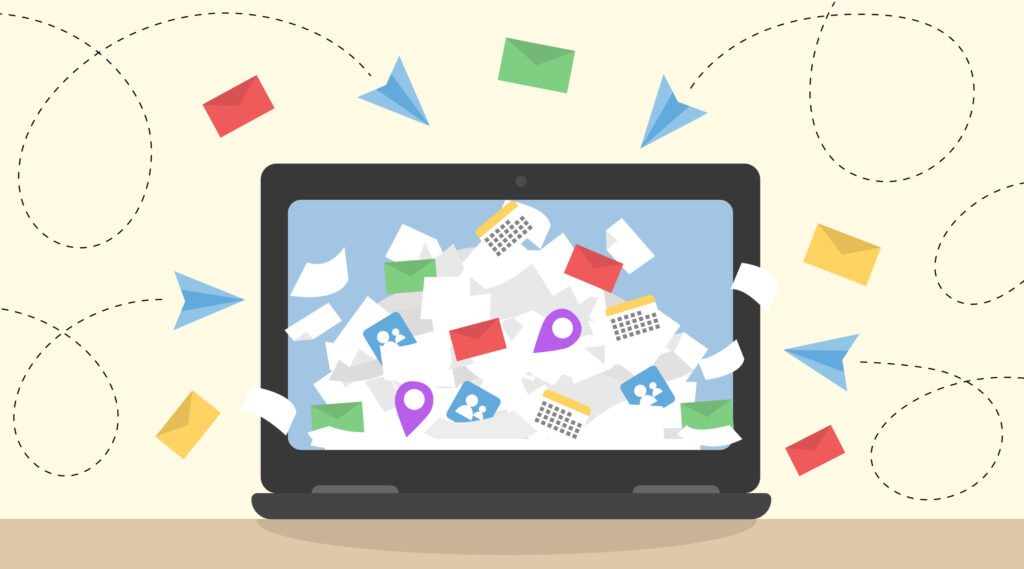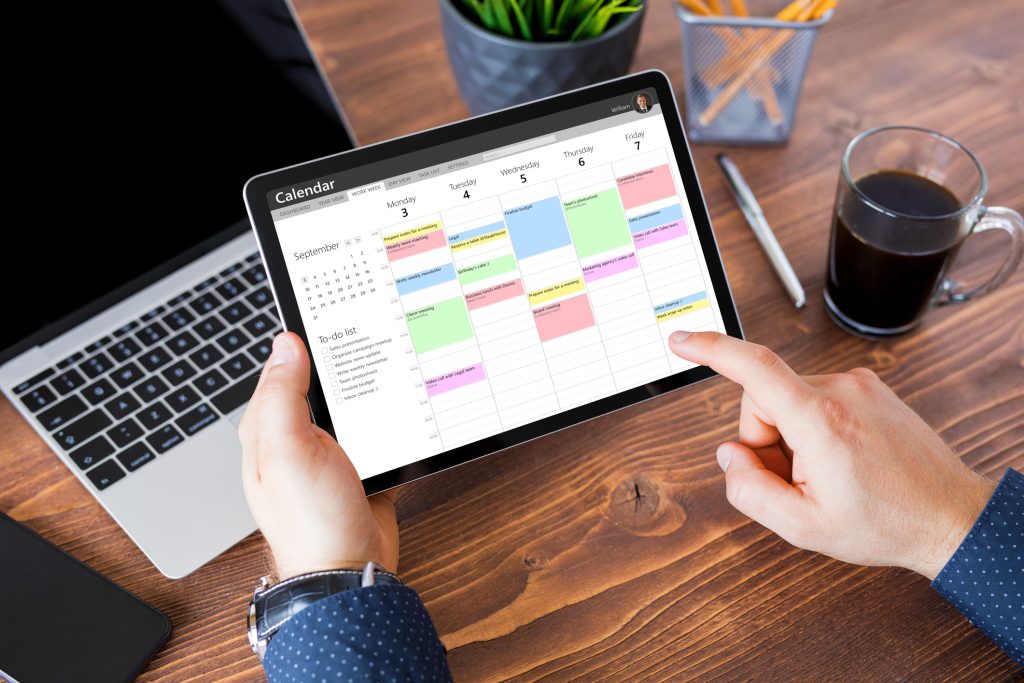Managing email has become a significant burden and time suck for many folks today. It seems we’ve forgotten that email is just a TOOL for our work, but for many, it has BECOME their work. We sacrifice focus and energy to the email god, and lose time for working on the things that actually matter and move our work forward.
Once an e-mail hits your in-box, having specific procedures for how to deal with it will help keep you on top of the pile before it gets out of control. Try some of these techniques to get out and stay out from under.
- Unsubscribe Like It’s Your Job!
Is your in-box filled with solicitations, store ads, catalogue specials, and newsletters that you either never signed up for, or never have time to read? Unsubscribe immediately. When that follow-up marketing email comes in after you’ve placed an online order, unsubscribe in that moment. You know it may take a second to find that “unsubscribe here” buried in the fine print, right? It’s hard to find because they figure if it takes long enough and they make it hard enough, you’ll give up. That’s their ticket into your in-box, and from there, into your time, your energy, and your life. It may take a few extra seconds one time, but reducing the pile of unwanted stuff in your in-box will not only save you time in the long run, it will make determining what IS important and managing it much easier if you don’t have to sort through the junk to find it. Think about sorting through a huge pile of papers to find the one paper you need. If you find you’re doing the same thing to find a specific e-mail in your in-box, you’re keeping too much in that box. If there is no option to unsubscribe (which is legally required), report it to your server as spam. You can also set up filters to block the offending e-mails from ever even reaching your in-box.

2. Deal With the Backlog
If you have an overwhelmingly huge backlog of emails sitting in your in-box from years past, it’s no different from having piles of paper stacked up around your office that are years old and out of date. They’re just getting in the way and cluttering up your mind and your space. People keep an enormous in-box of email for many reasons. Either they’re afraid of losing some important piece of information, or they’re under the delusion that they’re ever going to have the time or the desire to deal with requests and issues that are years old. Face it. If you have hundreds, or even thousands of unanswered or unread e-mails in your in-box that are more than a few weeks old, folks have either gotten the answer or information they need somewhere else, the issue is resolved or irrelevant now, or the information is hopelessly out of date. In any case, thinking you’re going to take the time to address this stuff at any time in the near future is unrealistic and self-defeating. If you can’t bring yourself to do a mass delete, take all the e-mails from a specific year and move them all into a folder marked with that year. For example, all e-mails from 2020 go into a folder marked “E-mails – 2020”, “E-mails – 2021,” etc. It won’t make them go away, you will still have them to refer to if you need them, but they will be out of your in-box and will allow you to start fresh.

3. Your in-box ≠ Your to-do list
The temptation to let to-do items linger in your in-box as a reminder to get them done works only as long as you keep your in-box to less than 10 items. If you accumulate more than that, your box just becomes visually cluttered, and e-mails disappear below the scroll line. Once out of sight, they risk being out of mind, too. I suggest getting any action item on to an actual task list and scheduled onto your calendar. Remember that a to-do list is only theoretical – it’s merely a list of things that you need or want to get done. Nothing happens with that list unless those items are actually given a specific time for action in your daily or weekly calendar. Once you’ve added the item to your task list and calendar, the e-mail can be deleted, or saved in a folder for needed information. The reminder becomes an actionable item on your to-do list and in your schedule, and the amount of e-mails lingering in your in-box is reduced and easier to manage.

4. Schedule time blocks for e-mail
Do you have a knee-jerk reaction to check your email every time you see that notification slide across your screen, or that little red badge number pops up? Do you pop into your email for “just a quick look” every ten minutes or so? Checking email again and again wreaks havoc with focused work! Every time you automatically react to an email notification, or impulsively go in to check your email repeatedly, whatever concentrated work you were doing is halted. Regaining your focus takes precious minutes and is a huge time waster. Instead, set aside specific time blocks each day to actually PROCESS your e-mail – read, respond, take action, or mark it in your task list to address when time allows. Schedule two time blocks a day – perhaps the hour before lunch, and again at the end of the day – or whatever works best for your schedule, to actually focus on email. Then, in the interim, turn off all alerts and resist the temptation to just take a quick peek. It will help you avoid being drawn in to using your most productive time for things that may not deserve that kind of priority. In addition, it also teaches people not to expect an immediate response to their email every single time!
Getting on top and staying on top of your e-mail requires diligence and often establishing new habits. Putting into practice methods of dealing with email, receiving less email, and keeping the junk out of your in-box will go a long way towards making it less overwhelming. Don’t let the electronic mail monster devour your time and energy – try some new ways of dealing with it and you will be gratified by the results!


